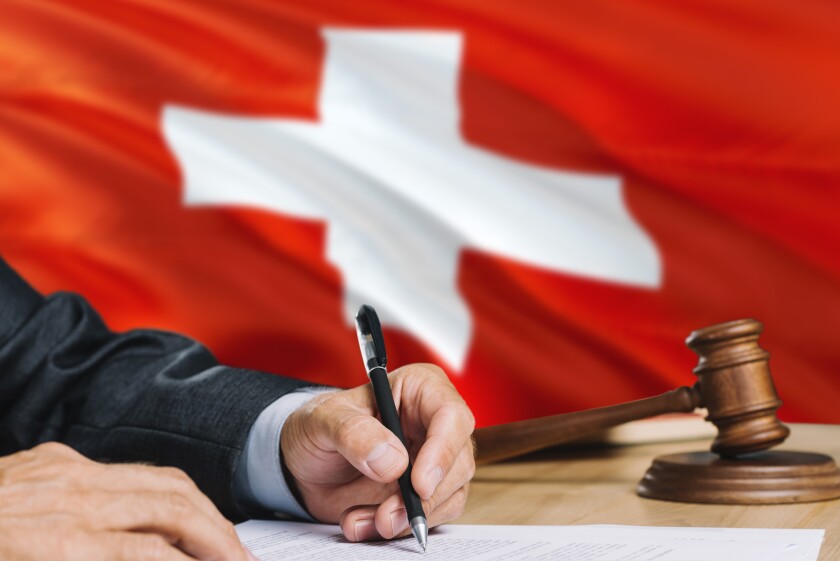Introduction to benefits in kind and the arm’s-length principle under Swiss law
Under Swiss law, a tax authority may consider a benefit in kind and make an adjustment only if the following three conditions are met:
The company received evidently no adequate compensation for its services or deliveries;
The compensation in question was in favour of the shareholder or a related party and would not have been provided to unrelated parties under the same conditions; and
The evident discrepancy between the service or delivery and the compensation was recognisable for the company or the persons representing the company.
The first two conditions concern the question of whether the agreed transfer prices fall within the range of prices or margins that independent third parties would have agreed on for the respective intercompany transaction (services, goods, licensing, financing). The third condition, however, is a Swiss peculiarity: the tax authority may only make an adjustment if the violation of the arm’s-length principle is obvious and thus recognisable for the management or the board of directors. This has to be determined on the basis of the concrete facts and circumstances of the case at hand.
Although Switzerland has no codified transfer pricing law – i.e., no specific regulations regarding the determination and documentation of transfer prices, neither at the federal level nor at the cantonal level – it adheres to the OECD Transfer Pricing Guidelines for Multinational Enterprises and Tax Administrations (the OECD TP Guidelines). The arm’s-length principle according to the OECD TP Guidelines is recognised and substantiated by the practice of the Swiss tax authorities and case law.
The importance of the OECD TP Guidelines was underlined recently with the publication of a paper by the Swiss Tax Conference, together with the Swiss Federal Tax Administration (FTA), in January 2024 that refers to, and summarises, certain sections of the OECD TP Guidelines, and the FTA publishing a Q&A on transfer pricing topics in February 2024.
In this article, the authors discuss a recent Federal Administrative Court (FAC) case regarding the hierarchy of transfer pricing methods in Switzerland in which the defendant appealed the assumption of a hidden dividend distribution by the tax authorities, and its implications for practice.
Facts on the Federal Administrative Court case
Although this case was not decided by the Federal Supreme Court (FSC), the ruling of the FAC nevertheless contains interesting and important considerations in respect of the selection and application of transfer pricing methods.
The case at hand concerned company A (A AG), an asset manager operating in Switzerland. A AG had outsourced part of its activities (i.e., portfolio management and advisory services) to two companies domiciled abroad, company B (B Ltd., domiciled in Hong Kong) and company C (C AG, most likely domiciled in Germany). These companies were each owned by different shareholders, with individual X holding a direct or indirect stake in all companies to varying degrees. In addition, his two sons held substantial shares in A AG and one of those sons also held a substantial share in C AG.
For direct tax purposes, A AG accepted profit adjustments by the cantonal tax authority due to excessive remuneration for these outsourced services provided by B Ltd. and C AG in 2015 and 2016 (presumably, the taxpayer did not contest the corrections as these could be offset with tax loss carry-forwards and did not lead to a tax cash-out).
After the FTA was informed by the cantonal tax authority regarding the adjustments, the FTA – after conducting an audit – was of the opinion that these profit adjustments were justified and constituted a benefit in kind, as a deemed dividend. Thus, they were to be considered for withholding tax purposes.
With regard to the services provided by C AG, which essentially related to the creation of model portfolios, the FTA justified the assumption of an obvious mismatch by the fact that two employees of A AG also worked for C AG, whereby they had an hourly rate of CHF 60 (i.e., only considering the hourly salary costs) at A AG and C AG charged CHF 300 per hour for the creation of the model portfolios. The FTA concluded that the hourly rate charged by C AG was obviously too high and not in line with the arm's-length principle.
The FTA reached the same conclusion with regard to B Ltd., which provided services to A AG for "Non Discretionary Investment Advisory" and "Asia Market News". All in all, to the extent that the dealing at arm's-length principle was violated, the FTA assumed deemed dividends and levied withholding tax of 35%.
For withholding tax purposes, A AG disputed the existence of hidden dividend distributions, as there presumably would be a partial withholding tax leakage (no full reclaim was possible based on the respective double taxation agreements between Switzerland and Germany and between Switzerland and Hong Kong). A AG reasoned that there was no related-party relationship, so the OECD TP Guidelines must not be applied.
What the Federal Administrative Court said
With regard to the assumption of a deemed dividend by the FTA, the FAC first pointed out that the tax administration has to prove the existence of an obvious mismatch between the service rendered and its consideration. Once this proof has been provided, the person concerned has the opportunity to provide evidence to the contrary. With regard to the assumption of an obvious mismatch, the FAC further stated that such a mismatch could only be assumed if the actually agreed prices lay outside the benchmark range for at arm’s-length conditions.
According to the FAC, contrary to the view of the FTA (and also some court cases of the FSC), there is – referring to the OECD TP Guidelines – a hierarchy in the application of transfer pricing methods. First, it must be reviewed whether there are comparable uncontrolled prices (CUPs) available. Only if there is no such internal or external comparable, the applicability of the other transactional standard methods has to be assessed. The court also stated that the cost-plus method applied by the FTA is less suitable for financial services.
As B Ltd. and C AG had rendered similar services at similar prices to independent third parties, the FAC was of the view that this internal CUP might have some informative value, despite the fact that they were from another tax period. It stated that in the case at hand, it needs to be identified whether these are comparable to the provided functions. Furthermore, the FAC noticed that there are indeed market prices available (external CUPs) regarding the service “building of a model portfolio”, referring to the homepages of UBS, BlackRock, Goldman Sachs, etc.
Thus, the FAC rejected the case to the FTA and requested it to review whether these services provided to third parties are sufficiently comparable to the provided services. Only if this is not the case shall the FTA review the other TP methods mentioned by the OECD TP Guidelines. Regarding the cost-plus method, the FAC mentioned in an obiter dictum that the direct and indirect costs are to be considered (and not only the direct costs, as the FTA did).
Additionally, the FAC points to Circular No. 4 of the FTA, in which the FTA mentions that the cost-plus method is inappropriate or only in exceptional cases appropriate in the case of financing services and management functions, and asks the FTA for a reason why such exceptional cases would be fulfilled in the case at hand. The FAC indicates that in such situations – i.e., where both parties contribute valuable services – a transactional profit split method might be preferred over a cost-plus approach.
Thus, the FAC held with regard to the FTA's approach that it had violated the methodological hierarchy according to the OECD TP Guidelines by relying exclusively on the cost-plus method (according to the nine-step approach where internal and external CUPs shall be reviewed in a first instance). In addition, the FTA only considered the labour costs and did not consider any other direct or indirect costs.
According to the court, whether the companies are related parties can remain open in view of the third-party prices to be analysed. A AG's appeal was upheld in so far as the matter is referred back to the FTA for further clarification regarding the third-party price and for a new objection decision.
Authors’ assessment
This court case is part of a series of recent cases that heavily refer to the OECD TP Guidelines and make extensive statements on transfer pricing methodology. This development is to be welcomed, as the systematic application of the OECD TP Guidelines creates legal certainty and prevents seemingly arbitrary assessments by the administration.
Despite the fact that the defendant was of the opinion that B Ltd. and C AG were not related, it was evident that they were indeed related since they indirectly had the same shareholders (relatives) and there were also shareholders as members of the board of directors of the defendant. As a result, the OECD TP Guidelines were relevant when determining the prices to be set in this scenario.
With regard to the referenced circular from 2004, it is questionable whether it can be viewed as still relevant today. Also, in the financial services industry, the cost-plus method has become common practice, depending on the individual functions and risks performed. Hence, it can be suitable for transactions such as activities or services that are supportive in nature, or corporate services or certain administrative services. As mentioned by the FAC, if each party provides unique and valuable contributions (i.e., investment advisory), a profit split is seen as more appropriate than the cost-plus method.
This transfer pricing case shows that the taxpayer should comply with one of the transfer pricing methods, reviewing internal and external CUPs always in a first instance. The choice of which one to apply remains at their discretion, if it is justified why it is the most appropriate method. Thus, the only criterion is the suitability with regard to the underlying functional analysis of each intercompany transaction. Furthermore, this case shows the importance of profound transfer pricing documentation in line with the OECD TP Guidelines to support the case of the taxpayer.













